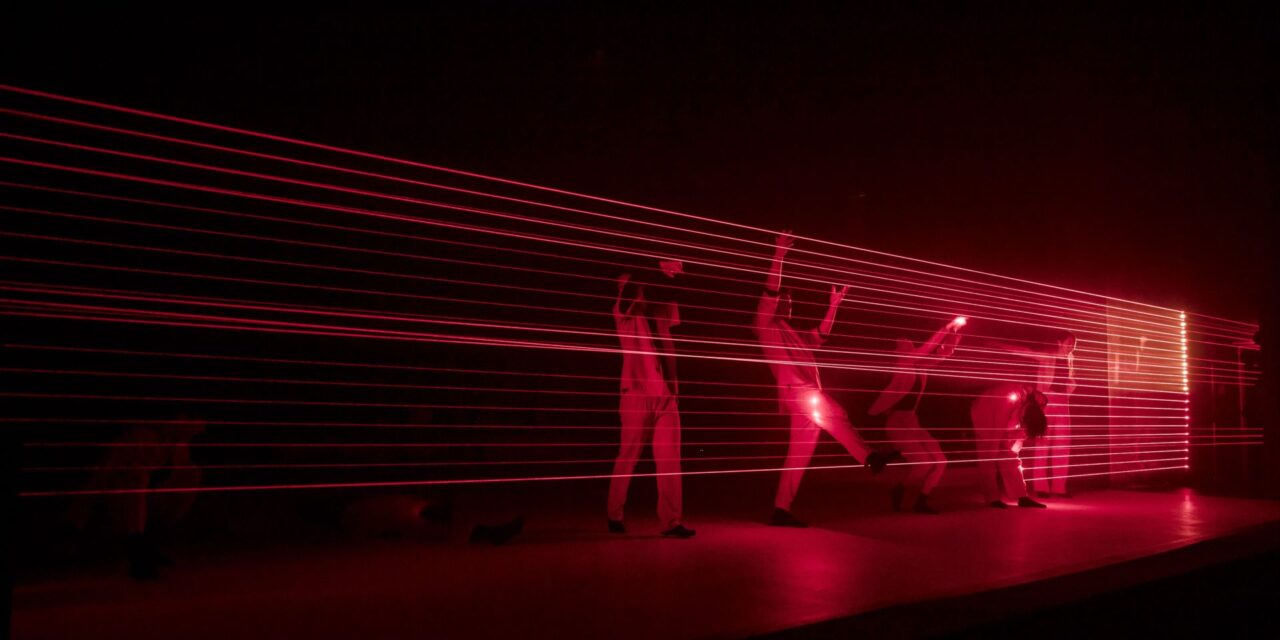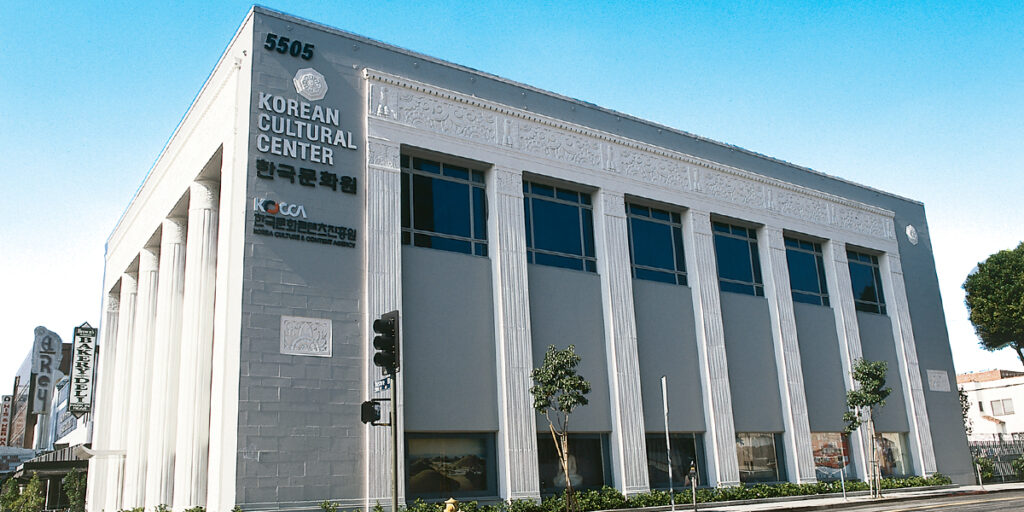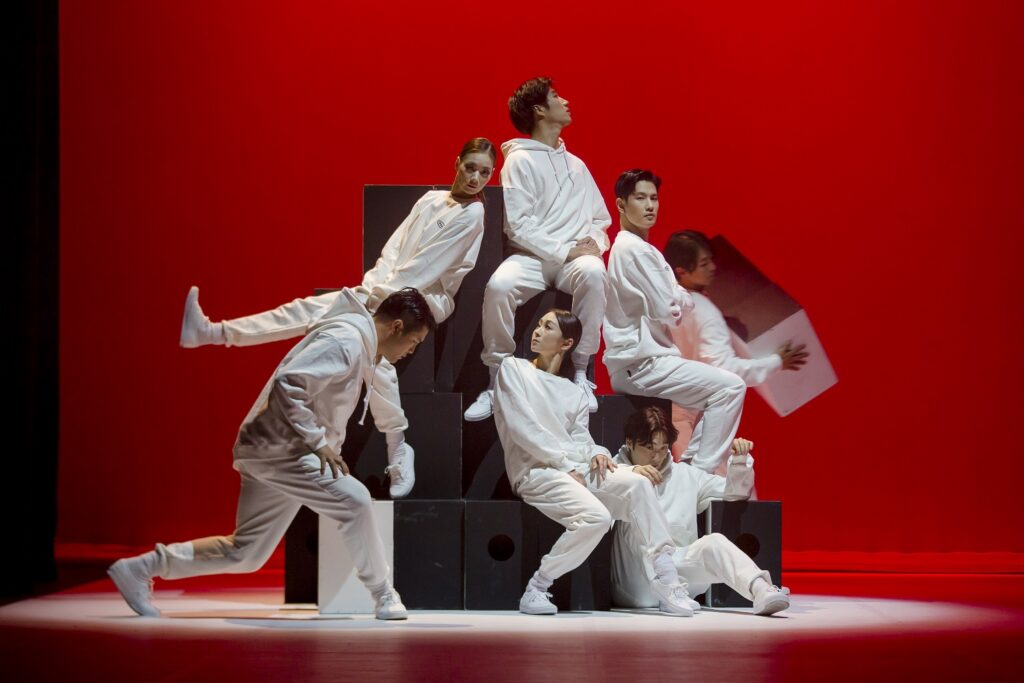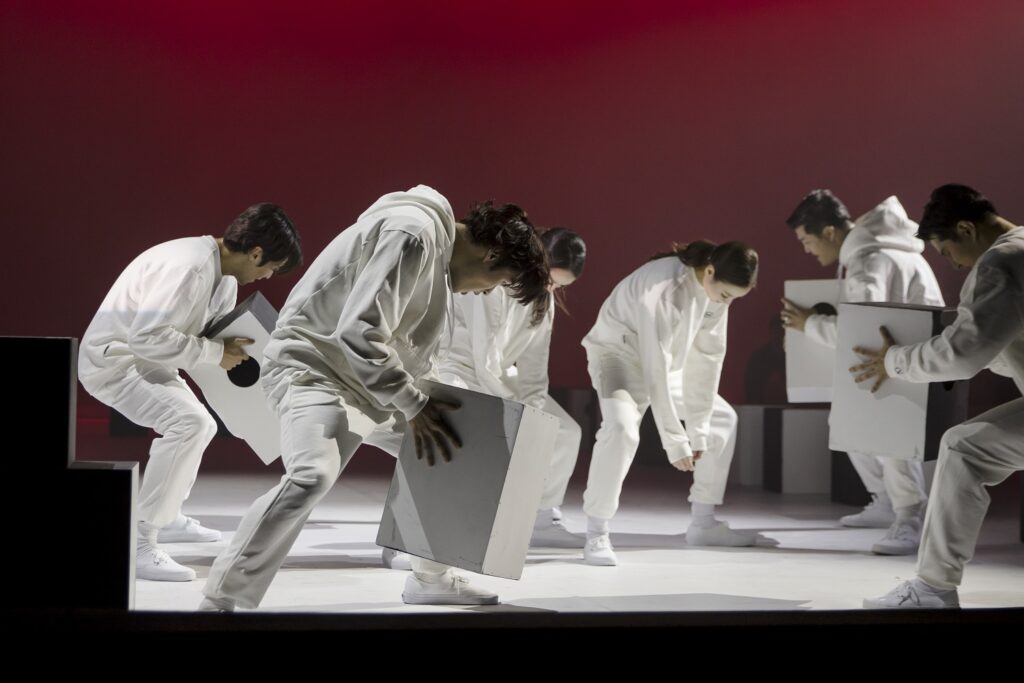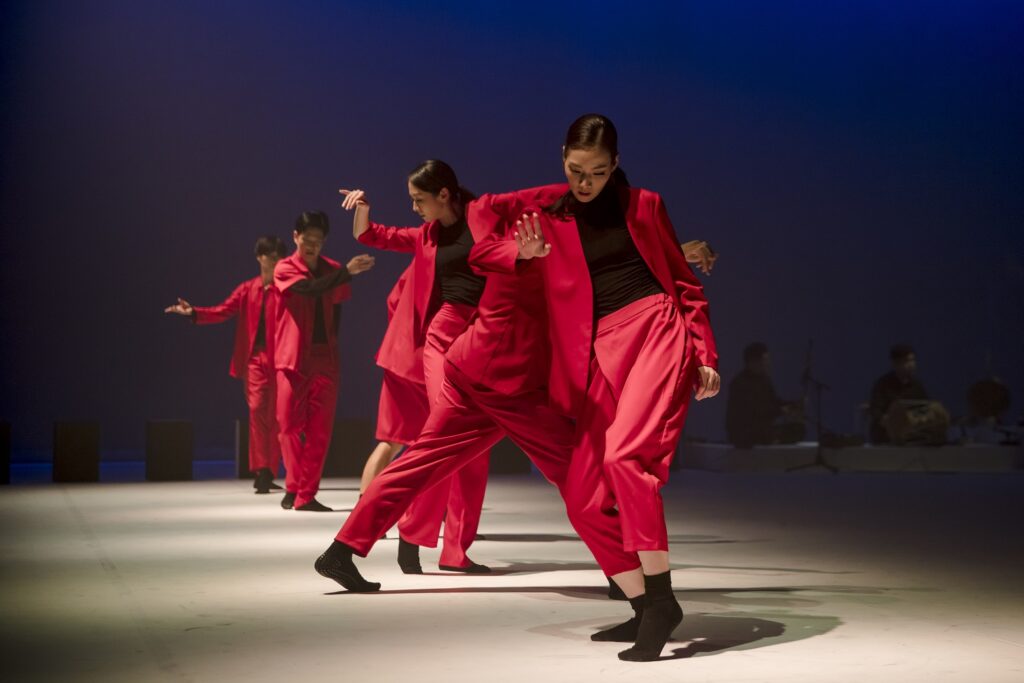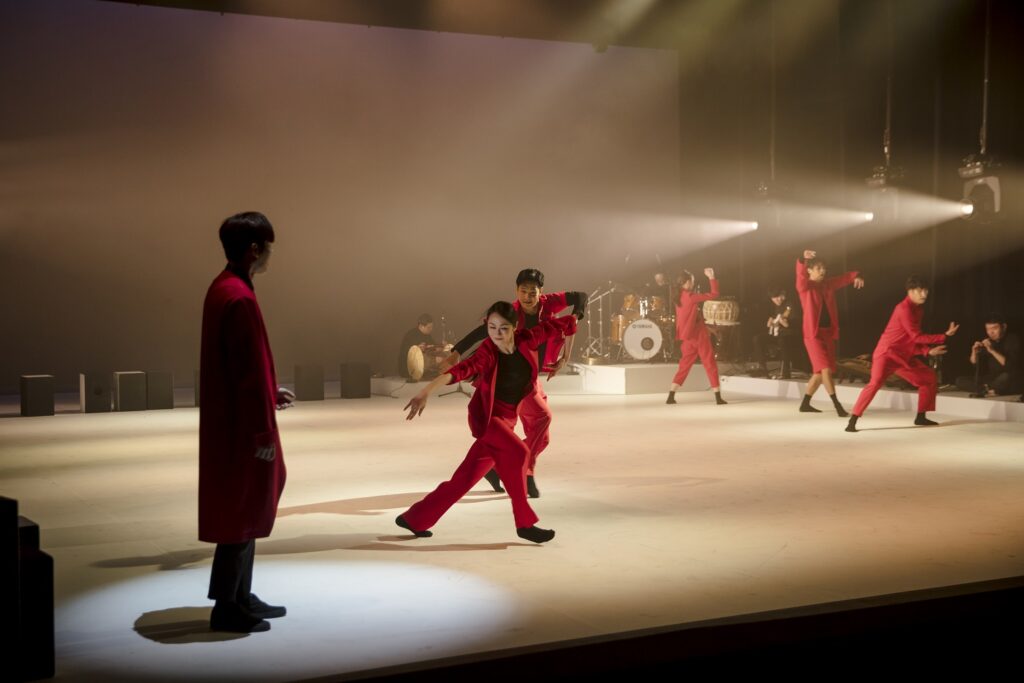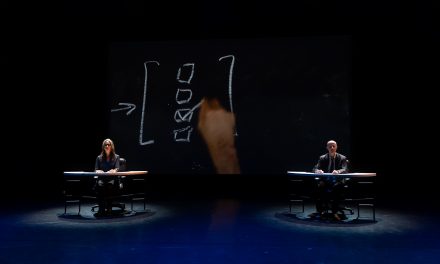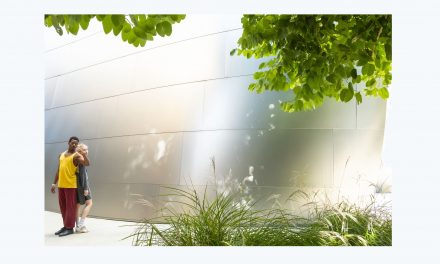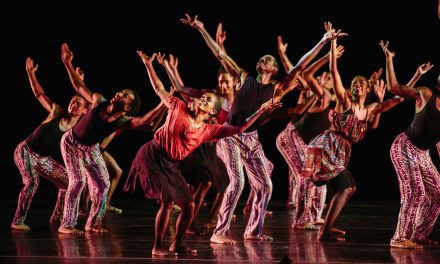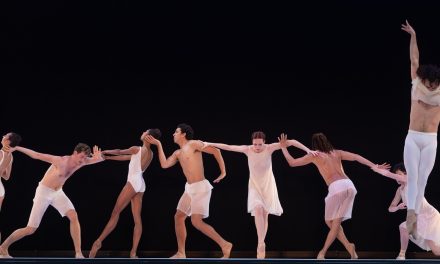The Korean Cultural Center of Los Angeles (KCCLA) has a beautiful intimate theater (Ari Hall) on the third floor of their building on Wilshire Blvd. Seating 96 it has a small stage and excellent sightlines for dance or film. I was there to watch a film, the “Seven Beats” by the National Dance Company of Korea. The film is being shown as part of the KCCLA’s celebration of the 80th Anniversary of Korean National Liberation.
With Japan’s surrender in the Pacific War in August 1945, four decades of Japanese colonial rule ended and U.S. and Soviet troops came to be stationed on the Korean Peninsula south and north of the 38th parallel, respectively. This resulted in the division of Korea into two separate countries. The end of this colonial rule began Korea’s emergence into the sovereign state and cultural entity it now is. To celebrate this milestone in history the KCCLA is presenting a number of special events highlighting the artistic and cultural heritage of Korea. The audience was a mix of ages from very young children to very old and all interested in this modern take on a very traditional Korean musical form with dance.
I hadn’t seen the National Dance Company of Korea before, and it was a fantastic experience to witness their work and this piece in particular in such an intimate setting. The film encapsulated the entirety of a performance of the “Seven Beats.” This is a musical phrase from traditional Korean Farmer’s music named the “Chilchae” rhythm and goes back even farther to shamanistic ritual. It is named for striking a gong seven times in one cycle. Kelly Che, in charge of the performing arts programming for the KCCLA and who hosted the evening, explained at the beginning that the cycle for this rhythm is thirty-six beats. How the seven-beats fit into the cycle of thirty-six is complex. Korean traditional music can fit into a three-beat or four-beat time signature, but it is more difficult to use the seven-beat time frame. In the film it is shown that the musicians are utilizing various groupings throughout. 3×12=36, 4×9=36, 6×6=36, 7×5+1=36, etc. Given this template for arriving at the thirty-six beats, the music was amazing and varied and wild. One thinks of Pythagoras or Einstein playing with mathematical equations. There are seven musicians onstage with traditional instruments; Haegeum, Ajaeng, Janggu, as well as some modern ones; drums, guitar. They also used a loop machine which overlapped rhythms made on the spot and developed them into whole dances.
There were seven dancers to match the seven musicians, and the company is well versed in contemporary dance. There were also elements of breaking and slow-motion, Tai-chi like movement improvised and also choreographed in unison. The opening was stark with a man sitting with his back to us watching a woman upstage standing on a stack of boxes about seven feet in the air. They were backlit and the effect was arresting. The whole show used the boxes in myriad ways and kept the color scheme to white and black. It was a positive/negative aspect to human interaction. Some good, some bad. At one point the color red is introduced and the reactions and feelings of the dancers becomes more pronounced.
I was amazed at the music and the levels through which it transformed the space, the dancers and the feeling. At one point it sounded as if Sonny and Cher teamed up with ACDC on a rendition of “The Beat Goes On.” Halfway through the piece a male singer enters and begins a duet with one of the dancers. The dancer has a phrase which the singer augments through his voice. Slowly at first, but the dancer makes him speed up to inhuman levels. It was intense to see and hear that caliber of voice. The singer then rips into what can only be described as Korean scat as the syllables cram together, each distinct but on top of the next in incredible succession. A female singer enters and her soprano is through the ceiling. She has a haunting solo that shatters glass and sets the dancers into a frenzy of turmoil.
There was some comedic relief in the form of a character all in white with a box on his head and a big smiley face on the box. He was very relaxed and reminded me of an R. Crumb character from the 60’s. He made the others relax and all enjoyed a laid-back groove. The lighting throughout was intense and very effective. It was also high-tech utilizing lasers for some gorgeous visuals. Unfortunately, there was no program of the Dance Company so I cannot say who the dancers and musicians were. Online I found the Artistic Director is Kim Sungyong whose philosophy is: “Dance is a language that cannot be described in words.” This was certainly true for “Seven Beats.” There will be another screening of a different piece that the company has set to film entitled “Mongyudowonmoo” on July 10th, 2025 at Ari Hall at 7:00pm. If ever this company tours to Los Angeles, I shall be there!
For more information about the Korean Cultural Center of Los Angeles, please visit their website.
Written by Brian Fretté for LA Dance Chronicle.
Featured image: National Dance Company of Korea in “Seven Beats” – Photo courtesy of KCCLA.

